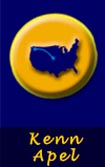Center for Instructional
Innovation and Assessment
INNOVATIVE TEACHING SHOWCASE
1999
2000
Institutional Goals
Listed below are selected learning outcomes in the area of critical thinking that Western Washington University is actively integrating into its curriculum. The WWU-UNO collaboration was designed to achieve many of these goals. Each learning outcome is listed with its definition, along with a description of how the project met each of these student learning outcome goals.
Critical Thinking
| Learning Outcomes | Definition | Course Outcomes |
|---|---|---|
| Identification | Accurately identifies and interprets evidence. | Prior to each webconference, students in each class worked together to establish valuable questions to guide joint discussions with the students in the other class. Afterward, the students reconvened with their classmates and instructor to identify key points that evolved from the online discussion and evaluate the varying interpretations. |
| Alternative Consideration | Considers major alternative points of view. | The WWU and UNO students each found they needed to clarify their interpretations of the readings and issues. Often, students in each class posed a differing explanation or definition of particular concepts. In some cases, one class would come to share the other's understanding, and at other times, they would develop a new, shared understanding of the course concepts. |
| Accurate Conclusions | Draws warranted, judicious, non-fallacious conclusions. | Since each class could see and hear each other during the webconference, the students in both locations constantly inspected and challenged the accuracy, prudence, and practicality of the statements being made. |
| Justification | Justifies key results and procedures, and explains assumptions and reasons. | Students in each class grounded their discussions in the readings, their professional experiences, and their interpretations of course lectures. Presenting their ideas in this manner led to scholarly discussion and debate. |
Source: Adapted from the California Academic Press's Holistic Critical Thinking Scoring Rubric (HCTSR).


